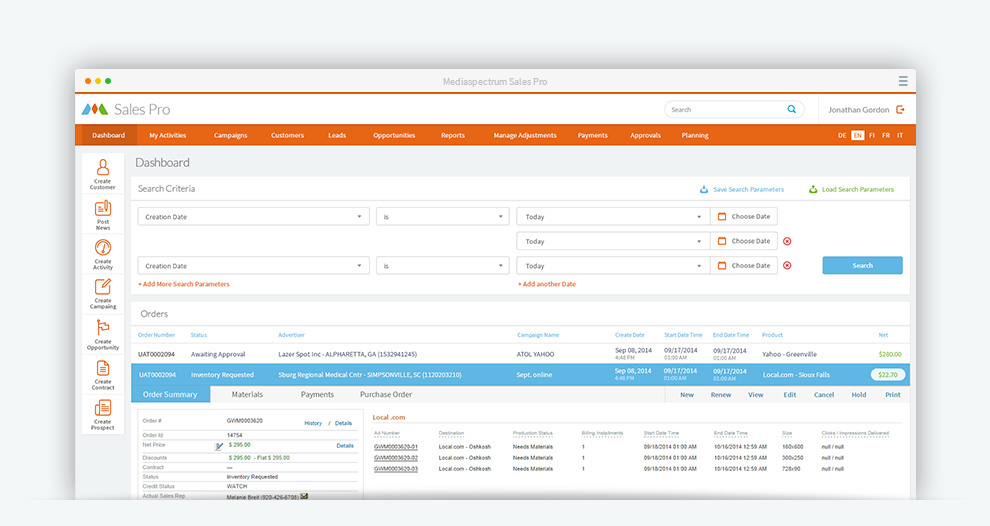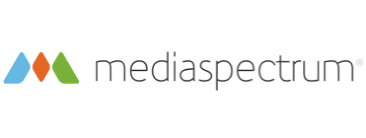Customer requests, campaign creation and management, billing reconciliation — when it comes to selling ad space, all these elements matter. Advertisers want quick responses with accurate offers and sales representatives want to close deals fast. An order management system (OMS) for publishers handles the whole sales process to meet their customers’ demands and grow their company’s revenue.
What Is An Order Management System?
An order management system (OMS) in the AdTech industry is a piece of software used for the sale, service, and settlement of digital advertising campaigns. Thanks to the various features and integrated tools, an OMS enables you to:
- Monitor the availability of your ad inventory.
- Create programmatic advertising campaigns across digital channels.
- Optimize advertising campaigns.
- Answer requests for proposals (RFPs).
- Create reports.
- Generate invoices.
- Conduct billing reconciliation.
You can connect your OMS with first- and third-party ad servers, ERP and CRM systems, BI platforms, SSPs, ad exchanges, and DSPs via APIs. By doing that, you create a sales and information hub for your company’s marketing and advertising activities. Also, you can facilitate a seamless data flow between the systems, forecast orders and initiate deals with the click of a button.

How Does An Order Management System Work?
In order to initiate an ad booking campaign, an opportunity has to be prepared. To do that, a sales representative creates a sales order and then submits the order’s details, including the name of the campaign and detailed line items such as ad location, ad slots, campaign dates, pricing, and targeting. They can also check the availability of their ad inventory and ask for internal approval of pricing. The OMS notifies the team members about pending actions.
The next step is to generate a formal document for the advertiser and send it over via email. The contract is usually based on a predefined template provided by the OMS and takes only a few minutes to fill in the document. To avoid mistakes, the contract can be checked and improved if needed.
Who Uses Order Management Systems?
The most basic users of order management systems are sales representatives and AdOps teams working at publishers. But an OMS can also be used by the executive management team and finance departments, e.g. to generate and view invoices and reconcile billings. By automating the various processes carried out in digital media transactions and working on the same datasets, companies increase their efficiency and eliminate bottlenecks.
Sales Representatives
With an OMS, sales reps can create new ad-revenue opportunities submitted by advertisers, formulate quotes, and close deals much faster than they would be able to use a bunch of different systems. They are also able to use dedicated features to forecast upcoming orders.
Advertising and Revenue Management Agencies
Advertising and revenue management agencies help their publisher clients manage, run, and optimize their ad inventory. Depending on the OMS provider, they can help their clients run digital advertising campaigns across various channels, such as display, in-app, DOOH, and CTV.
AdOps
AdOps teams handle the ad trafficking and reporting of digital advertising campaigns, managing the details of each campaign and improving its performance.
Financial Department
By using an OMS, finance departments can better manage cash flows, invoices, and the billing reconciliation process.
We Can Help You Build an AdTech Platform
Our AdTech development teams can work with you to design, build, and maintain a custom-built AdTech platform for any programmatic advertising channel.
The Key Features of Advertising Order Management Systems
Using an order management system simplifies, automates, and speeds up many digital advertising processes. An OMS can help publishers and agencies easily manage the processes related to the sale of direct deals, guaranteed inventory, and open RTB auctions, as well as the management of advertising campaigns and the creation of error-free invoices.
The key features of an OMS are:
- New order and campaign creation
Sales teams can easily create new opportunities for advertisers and quickly respond to RFIs and close sales or change existing contracts faster. Sellers easily classify the ad inventory they trade and create flexible offers. - Automated workflows
The process of turning an opportunity into an advertising campaign can be automated, providing a seamless transition from the sales team to the AdOps team. Visible advertising inventory, thanks to the integrated DSP and SSP platforms, allows you to plan campaigns in various channels. Ad management and optimization tools create space to improve your campaign’s performance. - Campaign analytics and reports
Publishers can view the performance of the advertising campaigns running across their digital properties via one user interface, making it easier to identify which campaigns are generating the most revenue. - Invoice creation and billing reconciliation
An OMS makes it much easier for the finance team to generate invoices without manual preparation and conduct billing reconciliation, significantly speeds up the revenue management process
The Benefits of an Order Management System
There are numerous benefits to using an OMS for various groups of users. The most fundamental and common for all of them is streamlining the order fulfillment process.
- Integrations with tools in the AdTech ecosystem: Integrations with ad exchanges, ad servers, DSPs, SSPs, ERPs, BIs, and CRMs (for example FreeWheel, Facebook Ads, Google Ads, Google Ad Manager, Yieldex) makes it possible to run top-notch programmatic advertising campaigns across different channels.
- Real-time business tracking: An OMS combines and presents data about accounting, ad inventory, and customer information on one dashboard, making it easy to track business performance and ad sales.
- AdOps automation: The whole digital advertising process is automated, from forming initial contact with advertisers to generating the invoice, and everything in between. Everyone using an OMS can save several man-hours and reduce labor costs by creating workflows and automatically generating reports and invoices.
- Order forecasting: With an OMS, forecasting sales is possible with greater accuracy thanks to the data an OMS collects about the performance of historical and current campaigns.
Which Companies Provide an Order Management System?
Here are some of the best companies providing order management systems:
FatTail

At the heart of FatTail’s business is AdBook+, an OMS focused on monetization, control, and scale. FatTail integrates CRMs, BI platforms, financial systems, ad servers, and buying systems to provide a comprehensive platform for publishers.
Founded: 2001
Headquarters: Calabasas, California
Placements.io

Placements.io is a modern revenue management platform for sellers of digital advertising. Its platform manages orders, inventory, billing, and integrations for direct and programmatic channels.
Founded: 2014
Headquarters: Seattle, Washington
Operavite

Operative created a cloud-based order management system for ad revenue. With Operative.One, users get advanced OMS capabilities, such as creating Premium Marketplaces, Open API, or custom reporting and analytics suite.
Founded: 2000
Headquarters: New York, New York
TapClicks

TapClicks, Inc. is a leading marketing technology company for agencies, media companies, brands, and enterprises. Its integrated Marketing Operations Platform includes sales enablement, workflow and order management, analytics, and automated reporting — all within a single intuitive user interface available on demand in the cloud.
Founded: 2009
Headquarters: San Jose, California
Lineup

Lineup Systems is a company from the US. They developed Adpoint, a solution for media businesses used by more than 6,800 media brands and entities.
Founded: 2009
Headquarters: Broomfield, Colorado
Cloudsense

Cloudsense built an end-to-end Media Order Management System (OMS) on Salesforce. They employ over 350 people across the globe and serve the most recognizable companies, such as Spotify, Newsday or News Corp Australia.
Founded: 2009
Headquarters: London
Mediaspectrum

Mediaspectrum focuses on delivering Sales Pro, a cloud-based solution for companies that need complex media advertising services. They employ 150 people worldwide.
Founded: 2001
Headquarters: Miami Beach, Florida
The Future of Order Management System
In 2017, Wideorbit conducted an online survey (n=77) among digital advertising operations, sales, and information technology professionals. The vast majority of order management system users were open to a system change. Only 10% were certain to stay with their current OMS for the next two years.
The most significant features users were looking for in an OMS were ease of implementation, customization, and configuration. Essentially, users want their OMS to automate manual processes and handle every aspect of their digital advertising activities.

Quick Recap
The automation of manual processes not only increases productivity and efficiency but also grows revenue. An order management system in the AdTech world is used by publishers, ad and revenue management agencies, and AdOps teams. By using an OMS, companies can automate the sale and creation of advertising campaigns, workflows, invoice generation, and billing reconciliation.
We Can Help You Build an AdTech Platform
Our AdTech development teams can work with you to design, build, and maintain a custom-built AdTech platform for any programmatic advertising channel.








